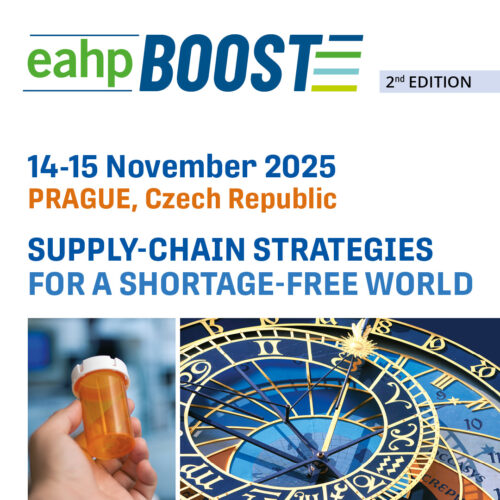The introduction of an emergency intravenous antibiotic reconstitution service during the COVID-19 pandemic.
European Statement
Patient Safety and Quality Assurance
Author(s)
Joanne Rhodes, Chris Bidad
Why was it done?
There was concern that there was a risk of reconstitution errors, missed doses or variation in dosing intervals which could impact on treatment efficacy and patient safety due to:
• a sudden increase in demand for IV antibiotics,
• depleted numbers of front-line nursing staff, and
• nurses being deployed to unfamiliar clinical environments and encumbered by PPE.
The emergency IV antibiotic reconstitution service was designed to mitigate these risks.
What was done?
In the absence of aseptic dispensing facilities an emergency intravenous (IV) antibiotic reconstitution service was set up in a laminar flow operating theatre. Nurses who could not work in a patient-facing role during the pandemic prepared ready-to-use infusions under the direct supervision of a pharmacist.
How was it done?
It was determined that a manufacturer’s licence was not required under part one, section three of the Human Medicines Regulations 2012 providing strict criteria were adhered to. Stability data was collated for the most frequently used IV antibiotics. Even where stability data supported a longer period, a maximum expiry of 24 hours after preparation was assigned. Processes were designed to adhere as closely as possible to the GMP principles described within The Rules and Guidance for Pharmaceutical Manufacturers and Distributors 2017. Specially tailored IV reconstitution training was delivered to the nurses.
What has been achieved?
Over a period of 4 weeks at the peak of the pandemic 1000 doses of IV antibiotics were prepared and supplied, enabling ward-based nurses to focus directly on patients. There were no reports of any incidents of delayed or missed doses, or administration errors relating to IV antibiotics supplied to the wards involved during this period. The time saved on the wards was equivalent to having 3 additional nurses on the wards each day.
What next?
With a reduction in the number of COVID-19 positive patients now presenting to the hospital the service has been paused but placed on standby so that it can be resumed in the event of a second wave. Work is underway to determine if there would be value in the team preparing a wider range of products, particularly those which may be of particular use in critical care areas such as sedatives and inotropes.
























